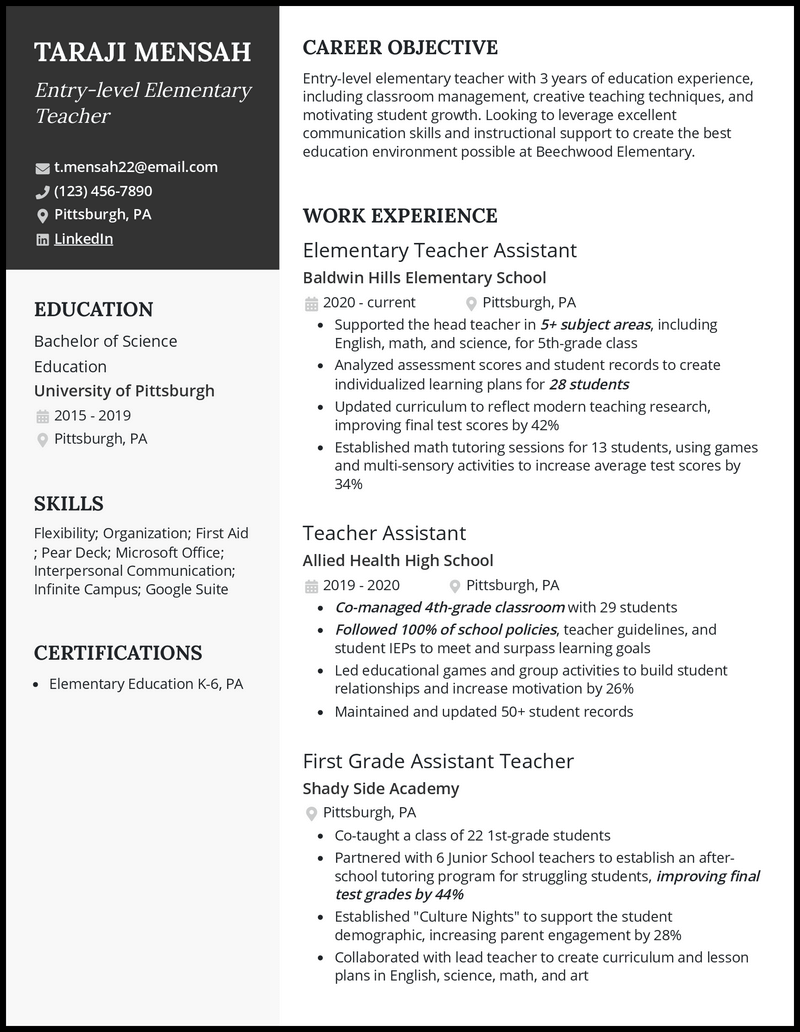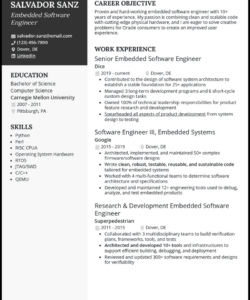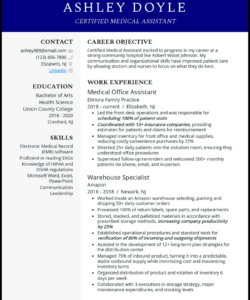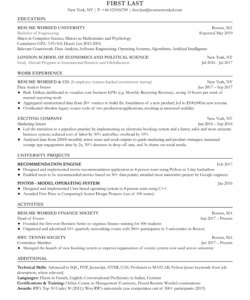Embarking on a career in education is an exciting journey, but landing that first teaching position can sometimes feel like a daunting task. You’ve worked hard to gain your qualifications, honed your teaching philosophy, and now it’s time to present yourself professionally to potential employers. Your resume is often the first impression you make, and for aspiring educators without extensive classroom experience, crafting one that truly stands out is absolutely critical.
This guide is designed to help you navigate the process of building an impressive curriculum vitae from the ground up. Whether you’re fresh out of a teaching program or transitioning into the field, having a solid starting point can make all the difference. We’ll walk you through the key elements of an effective entry level teacher resume template, ensuring you highlight your strengths and potential even when your professional portfolio is still developing.
Crafting Your First Impression: Essential Sections of an Entry Level Teacher Resume
When you’re just starting out, your resume isn’t just a list of past jobs; it’s a strategic document that showcases your potential, passion, and preparedness for the classroom. Hiring committees want to see that you have the foundational knowledge and the right mindset to positively impact student learning. Therefore, every section of your resume, from your contact information to your certifications, needs to be meticulously planned to paint a complete and compelling picture of who you are as an educator.

The top of your resume should always feature your contact information: your full name, phone number, professional email address, and perhaps a link to your LinkedIn profile or professional portfolio if you have one. Following this, an impactful Resume Objective or Summary statement is paramount for entry-level candidates. This is your chance to immediately convey your career aspirations, highlight your most relevant skills, and express your enthusiasm for teaching. Rather than just stating what you want, focus on what you can bring to the school and its students.
Highlighting Your Education and Certifications
For entry-level teachers, the education section is undeniably one of the most vital components of your resume. It demonstrates that you have completed the necessary academic and practical training to become a certified educator. You should clearly list the degrees you have earned, the universities you attended, and your graduation dates. If your GPA was particularly strong (e.g., 3.5 or higher), it’s often a good idea to include it. Don’t forget to mention any relevant coursework, specializations, or honors you received, as these can provide valuable insights into your academic focus and strengths.
Equally important are your teaching certifications and licenses. These are non-negotiable requirements for teaching positions, so make sure they are prominently displayed and easy to find. List the specific certifications you hold, the state that issued them, the issuance and expiration dates, and the subject areas or grade levels you are certified to teach. This section quickly tells a hiring manager that you are legally qualified to step into a classroom.
* University Name, City, State – Degree, Major (e.g., Bachelor of Science in Elementary Education)
* Expected or Actual Graduation Date
* Relevant Coursework or Specializations (e.g., Literacy Instruction, Special Education Inclusion)
* State Teaching License Status (e.g., Provisional, Initial) and License Number
* Certification Areas (e.g., Elementary Education K-6, Secondary English 7-12)
* Endorsements (e.g., ESOL, Gifted Education)
Showcasing Limited Experience Effectively: The Power of Practicum and Transferable Skills
One of the biggest hurdles for new teachers is the perceived lack of “real-world” teaching experience. However, your practicum, student teaching assignments, and any internships you’ve completed are incredibly valuable and should be treated as full-fledged teaching experiences on your resume. Don’t just list the school and dates; elaborate on your responsibilities and, more importantly, your achievements. Detail the grade levels you taught, the subjects, your specific duties (e.g., designed and implemented lesson plans, managed a classroom of 25 students, assessed student progress), and any positive outcomes you influenced. Use strong action verbs to describe your contributions and quantify achievements whenever possible (e.g., “Increased student engagement by 15% through interactive lessons”).
Beyond formal student teaching, consider any other experiences that have provided you with transferable skills relevant to education. Perhaps you worked as a camp counselor, tutored students, led a youth group, or even held a part-time job that required strong organizational, communication, or problem-solving skills. These experiences, though not directly in a classroom, can demonstrate your ability to manage groups, adapt to different learning styles, communicate effectively with diverse audiences, and handle challenging situations with grace and professionalism. Think broadly about how your past roles have prepared you for the complexities of teaching.
A dedicated “Skills” section can further bolster your application, especially for an entry level teacher resume template. This is where you can list both your hard skills (like proficiency with specific educational technology, learning management systems, or subject-specific software) and soft skills essential for teaching. Think about classroom management techniques you’ve learned, your ability to differentiate instruction for diverse learners, assessment strategies, and your communication and collaboration abilities. Including these highlights your readiness and versatility for various classroom environments.
* Lesson Planning and Curriculum Development
* Classroom Management and Behavior Support
* Differentiated Instruction and IEP Implementation
* Formative and Summative Assessment Strategies
* Parent-Teacher Communication and Conferences
* Educational Technology Integration (e.g., Google Classroom, Smartboard, Microsoft Teams)
* Collaborative Teamwork
* Cultural Competency and Inclusivity
Crafting a compelling resume when you’re just starting your teaching career requires a strategic approach. By meticulously detailing your education, practical experiences like student teaching, and highlighting your transferable skills, you can effectively demonstrate your readiness and passion for the profession. Remember to tailor each application to the specific school and position, ensuring your document speaks directly to their needs.
Your resume is more than just a piece of paper; it’s your professional story, designed to open the door to your first teaching interview. With a well-structured and thoughtfully written document, you’ll be well on your way to making a meaningful impact in the lives of students and contributing to the vibrant world of education.


